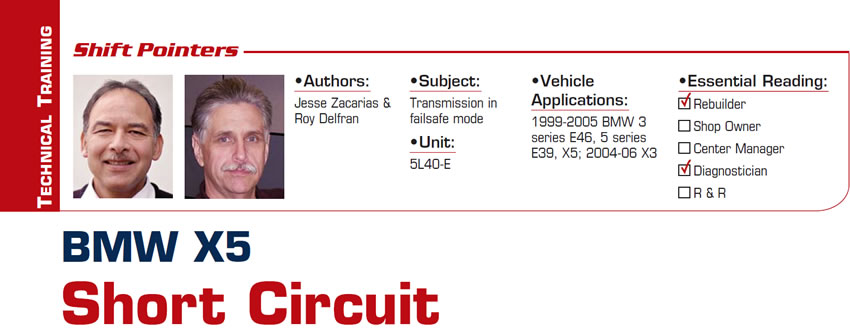
Shift Pointers
- Subject: Transmission in failsafe mode
- Unit: 5L40-E
- Vehicle Application: 1999-2005 BMW 3 series E46, 5 series E39, X5; 2004-06 X3
- Essential Reading: Diagnostician
- Authors: Jesse Zacarias & Roy Delfran
Doing electrical work can be interesting at times, and you never know what you will discover to be the cause of the problem. For example, a customer brought us his 2001 BMW X5 with the 5L40-E automatic transmission in failsafe. Another shop had worked on the engine and told him that the problem was with the transmission. When we checked for codes it had multiple codes in the engine control module (Figure 1).
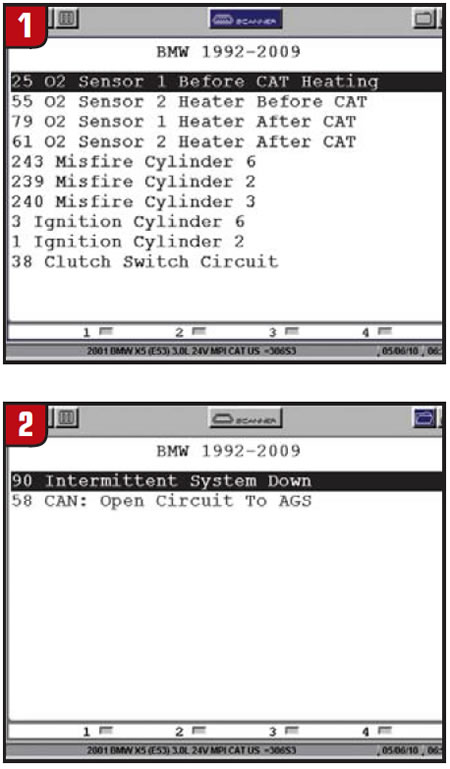
When we tried to retrieve the codes from the transmission control module (TCM), we found codes 90 and 58. We attempted to look at the data related to the codes but were unable to obtain data from the TCM (Figure 2).
Because of the presence of code 58, we decided to check for CAN communication at the TCM. The readings of highs and lows showed that there was communication (Figure 3), so we proceeded to check for proper grounds and voltages at the TCM.
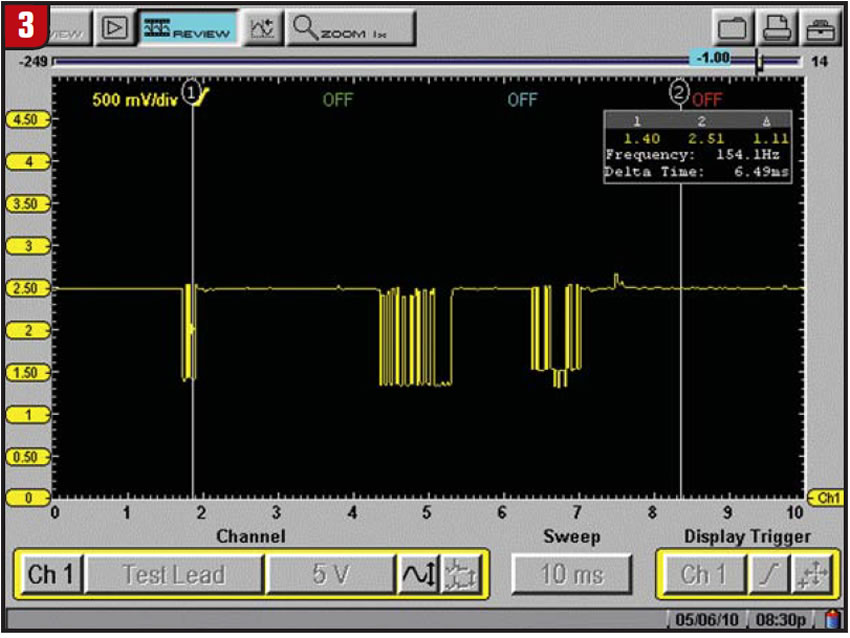
It was here that we noticed there was no voltage at pins 8 and 9 of the TCM.
The wiring diagram (Figure 4) showed that these pins get their voltage from fuse F4 in the engine compartment.
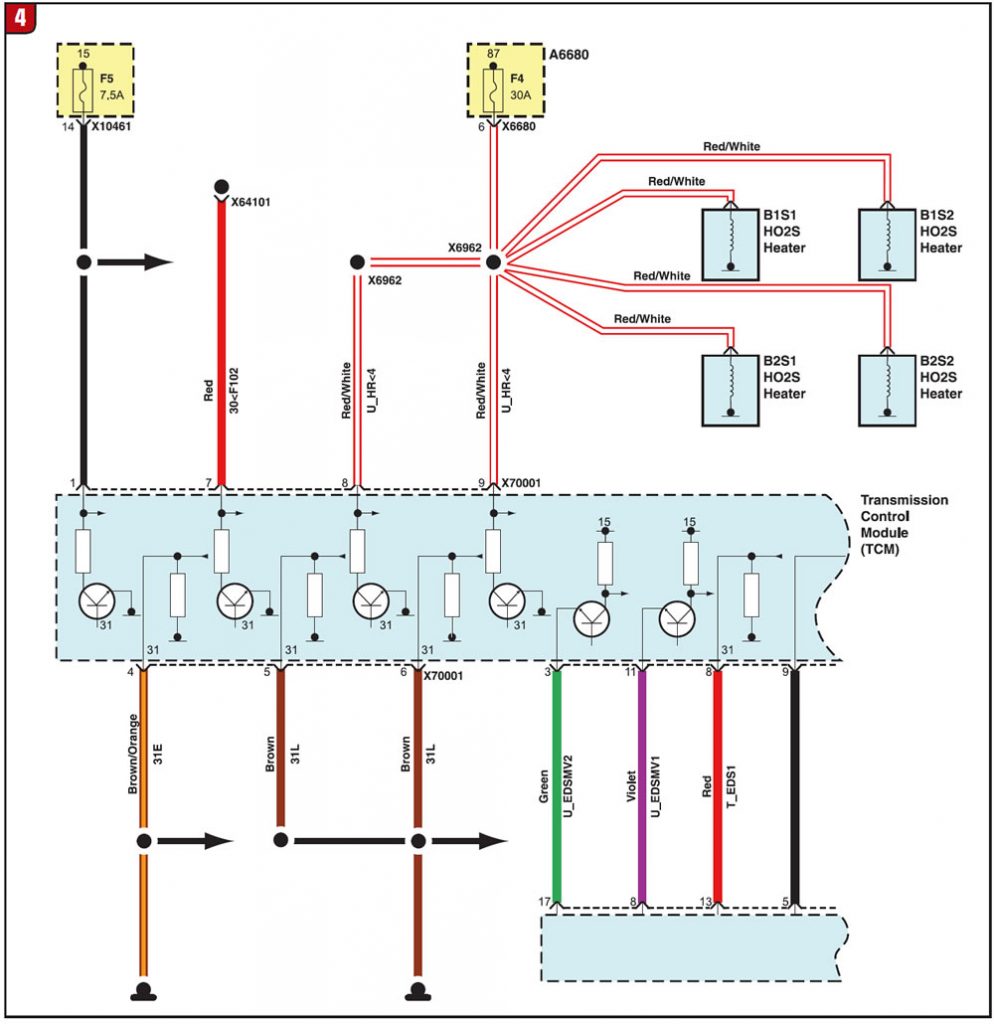
Here is where it got difficult. Using all the technical resources at our disposal we were unable to find any references that pointed to the location of the F4 fuse. Fortunately, we know a good BMW technician, William Pearson, who works on these vehicles every day, and within a few minutes he had the fuse accessible and we could see that it was blown (Figure 5).
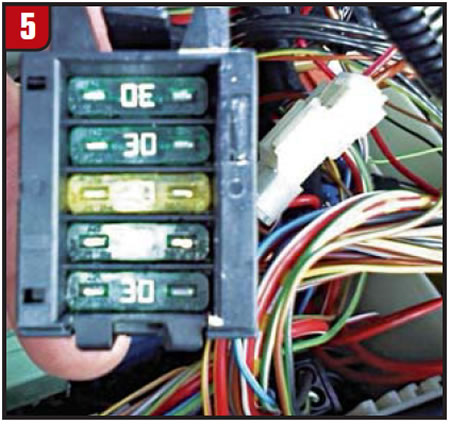
On the X3, E85 & 3 series E46, the F4 fuse is in the left-rear portion of the engine compartment against the firewall in the E-box (Figure 6).
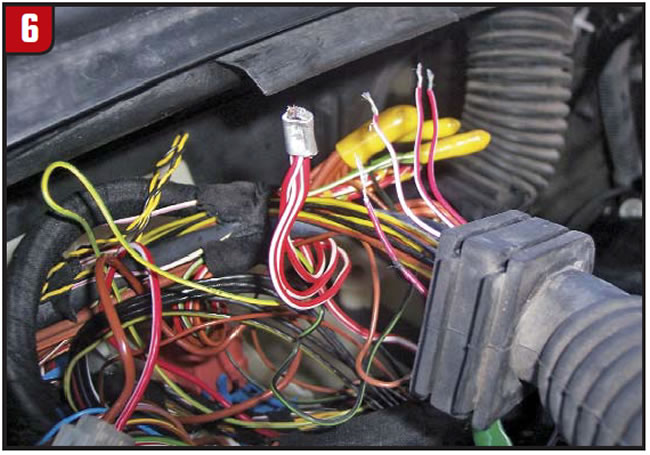
On the 5 series and the X5 the F4 is at the right rear of the engine compartment under the black plastic E-box cover.
As you can see by the wiring diagram in Figure 4, this fuse also provides the voltage for the O2-sensor heaters, and when we checked the fuse we found that we had a direct short to ground.
To locate the circuit with the short we separated all four of the O2-sensor-heater circuits from the splice (Figure 6), and we noticed that the short was not there. That told us the short was within the four O2-sensor-heater circuits and not in the TCM. So we connected all four O2-sensor heaters one by one until we found the shorted sensor circuit.
Once we isolated the shorted circuit, we started to check the wiring. It was here that we found the problem. It seems that the person who worked on the engine left out the bracket that holds the O2-sensor wires away from the exhaust manifold. At one time or another, the harness was resting on the manifold. Even though there were no signs on the harness sleeve to indicate a problem, the heat had penetrated the protective sleeve and the internal harness was melted together (Figure 7), shorting out the F4 fuse.
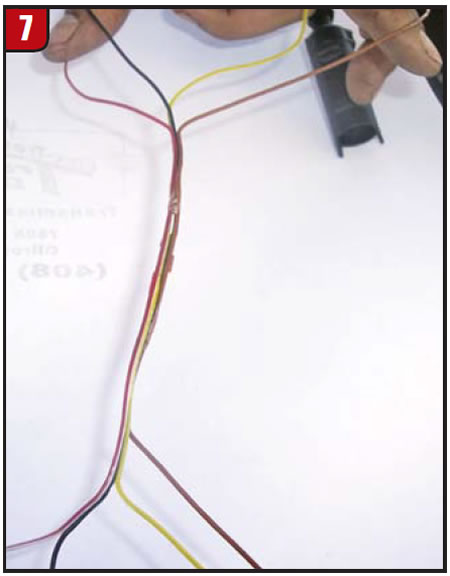
Because of the high cost of a replacement harness and the two weeks it would take to get a new one, we opted to repair the harness by cutting out the damaged portion and soldering the wires back together.
After we replaced one of the ignition coils that was also damaged and reconnected everything, the vehicle ran fine; as expected, we had communication with the TCM, and the transmission shifted.
So the next time you see a BMW with a 5L40-E transmission with no communication with the TCM and all four O2-heater codes, you may want to look for fuse F4. To the best of our knowledge this information and wiring harness apply to 1999-2005 BMW 3 series E46 except M-3, 5 series E39 with six-cylinder engine and X5 with 3.0-liter engines, and 2004-06 X3.

Special thanks to Dave Weiland from Snap-on Diagnostics and BMW technician William Pearson for their help.
Jesse Zacarias is the owner of Elec-Tran Diagnostics (www.electrandiagnostics.com) in Gilroy, Calif. Roy Delfran is with Snap-on Diagnostics “Ask-a-Tech Web Services” (http://askatech.snapon.com).













